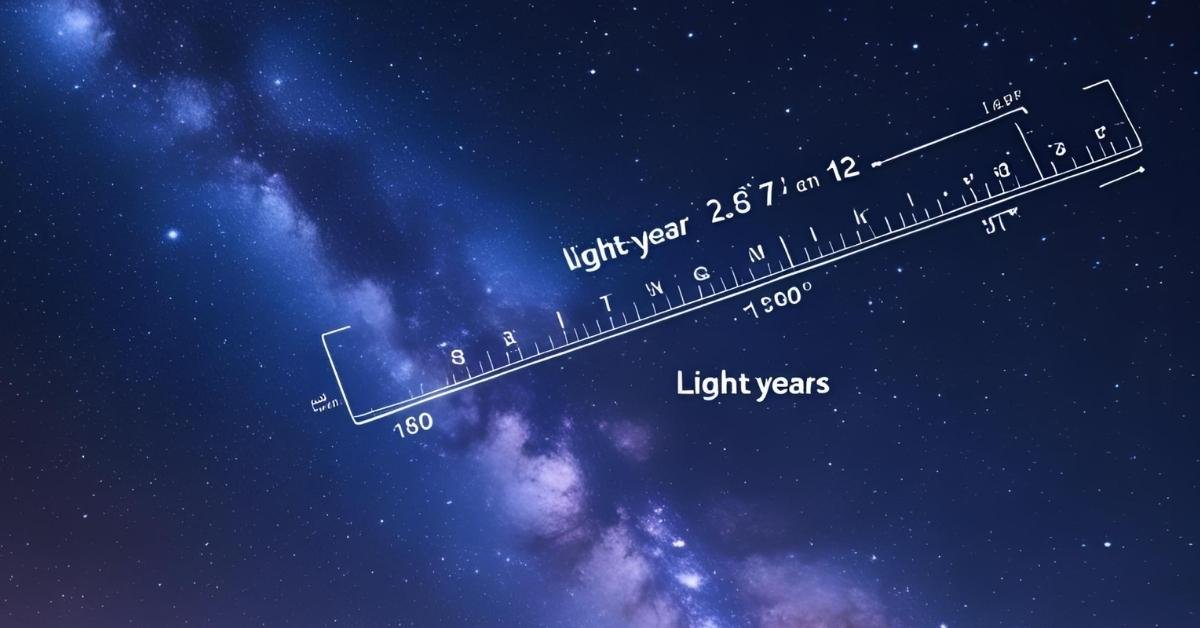A light year measure
Confused about what a light year really measures? Discover why it’s a unit of distance, not time, and how astronomers use it to explore the vastness of our universe.
Have you ever heard the phrase “light years away” and thought it referred to time? You’re not alone. The term light year might sound like it measures time, but in reality, it’s a unit of distance. In the vast world of astronomy, where kilometers and miles simply aren’t enough, scientists use light years to describe unimaginable distances between stars, galaxies, and other celestial objects.
In this article, we’ll break down what a light year truly measures, how far it is, and why it’s crucial in the field of space science.
What Is a Light Year?
Despite its name, a light year doesn’t measure time; it measures distance.
A light year is the distance that light travels in one year, moving through the vacuum of space.
Light travels at a speed of approximately 299,792 kilometers per second (or about 186,282 miles per second).
That means, in one year, light travels about 9.46 trillion kilometers (or 5.88 trillion miles).
So, when astronomers say a star is 4 light years away, they mean that light from that star takes 4 years to reach us, traveling at that incredible speed.
Why Can’t We Use Kilometers or Miles in Space
Imagine trying to measure the distance from Earth to the nearest galaxy using kilometers; it would require a number with dozens of zeroes! It becomes too large and impractical. That’s where the light year comes in handy. It simplifies huge distances into easily understandable terms.
Instead of saying:
“The Andromeda Galaxy is approximately 9,460,000,000,000,000,000 kilometers away,”
astronomers simply say:
“It is about 2.5 million light years away.”
Why Does the Light Year Matter in Astronomy?
- Measuring Deep-Space Distances: Light years help scientists determine how far celestial objects like stars, nebulae, and galaxies are from Earth. This understanding is critical for mapping the universe.
- Understanding Cosmic History: Since light takes time to travel, when we observe a star 1,000 light years away, we’re actually seeing it as it was 1,000 years ago. In other words, looking far into space is like looking back in time.
- Comparing Astronomical Objects: By measuring distances in light years, astronomers can estimate how old a star is, how fast a galaxy is moving, or whether an exoplanet lies in the “habitable zone.”
Real-World Examples
1. Proxima Centauri, the closest star to Earth (after the Sun), is about 4.24 light years away.
2.The Milky Way is about 100,000 light years wide.
3.The Andromeda Galaxy, our nearest major galactic neighbor, is 2.5 million light years away.
Why Students Should Understand Light Years
For school and competitive exams, especially in science and astronomy, understanding this concept builds a solid foundation in astrophysics. It also sparks curiosity; what else is “out there” in the universe?
The term “light year” represents one of the most fascinating ideas in science. It bridges the gap between space and time, helping us not only measure how far things are but also how far back in time we’re looking.
So next time you hear someone say, “That technology is light years ahead,” you’ll know; they’re not just talking about time. They’re talking about distance so vast, it challenges the imagination.
FAQs
-
Q1. Is a light year a unit of time or distance?
Answer: A light year is a unit of distance, not time. It measures how far light travels in one year through space; approximately 9.46 trillion kilometers (or 5.88 trillion miles).
-
Q2. Why do scientists use light years instead of kilometers or miles?
Answer: Distances in space are enormous, far too large for kilometers or miles to be practical. Using light years simplifies these massive numbers and helps scientists describe how far stars and galaxies are in a more understandable way.
-
Q3. How fast does light travel in one second?
Answer: Light travels at a speed of about 299,792 kilometers per second (or 186,282 miles per second) in a vacuum.
-
Q 4. What is the closest star to Earth in light years?
Answer: The closest star system to Earth (after the Sun) is Proxima Centauri, which is about 4.24 light years away.
